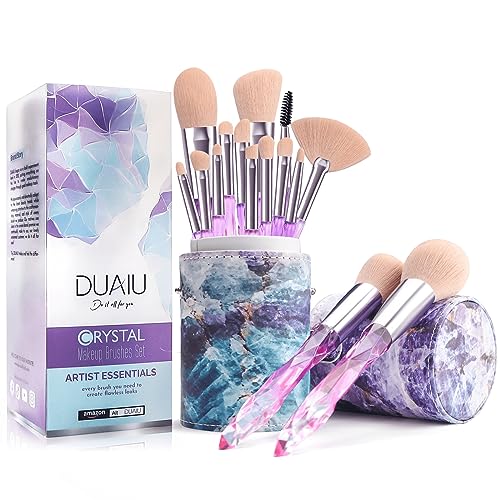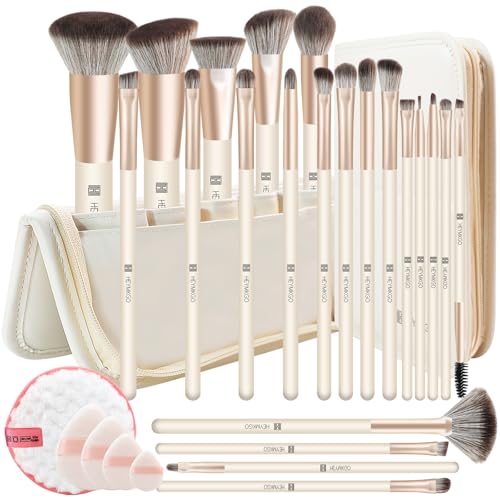- Joined
- Feb 22, 2006
- Messages
- 22,700
- Reaction score
- 1
Healthy Hair Habits
By Patricia Reynoso
Techniques and products for a perfect head of hair.
Shampoo Smartly
Does it really make a difference what type of shampoo you use and how often you use it? Actually, it does! Using a shampoo that contains a high percentage of the lathering agent sodium laureth sulfate can leech moisture out of your hair because it is so drying. While shampoo labels don't list how much of this ingredient is in the shampoo, you can still pick wisely by looking for one that doesn't have it at all or that is billed as a gentle cleanser. As a bonus, today's shampoo formulas go far beyond cleansing and can strengthen hair and reduce hair loss from breakage. Here, a few favorites:
Every type of hair -- including fine hair and hair that has never been chemically processed -- will reap benefits of using a conditioner. According to David H. Kingsley, PhD, founder of the British Science Corporation, a hair-and-scalp center in New York City, instant conditioners treat only the outer layer of the hair strand, temporarily smoothing down ragged, dry ridges. Deep conditioners are formulated to actually penetrate the hair strand when they're left on for up to an hour, providing the necessary extra resilience that the environment, styling rituals, and simple wear and tear take away. To get older, longer hair looking and feeling healthy, Kingsley recommends applying a deep conditioner at least once a week.
In addition, consider the new nontraditional conditioners that are popping up everywhere. Conditioning sprays and lotions, which go on either between shampooing and conditioning or immediately before styling, are specifically created to replenish dry hair that has lost is strengthening protein. Here, a few suggestions:
You've shampooed and conditioned your hair and you're ready to blast it with a blow-dryer, followed by touch-ups with a curling or straightening iron. Does this scenario sound familiar? We're not going to tell you to stop following this routine, as long as you use protective styling products first.
"The biggest mistake women make is not using products before they heat-style, so they end up frying their hair," says Eva Scrivo, a stylist and salon owner in New York City, who counts Martha Stewart among her clients. Scrivo also points out that many women are afraid that styling products will weigh their hair down, but in reality they act as a barrier between hair and heat.
Here, new smart stylers to try:
Contrary to what you might have heard, coloring your hair won't harm it, but repeatedly coloring your whole head when only the roots need it will. And if your hair is also chemically straightened or permed, well, now you're really starting to risk damaging it. This is because a healthy hair strand is similar to an empty closet with a sturdy door. Every time that you undergo a chemical treatment, you're essentially opening this closet door and throwing things into it. Piling on treatment after treatment is like stuffing a closet with so much clutter that the door doesn't close as well. The result: a weakened hair strand. That's why experts recommend that you try not to color more frequently than every four weeks. And if you do color your hair, be aware that you most likely won't be able to straighten or perm it at the same time.
Get a Timely Trim
While it can be challenging to find time for regular trims, it's worth every effort. Waiting until your hair is frayed and frazzled before booking your next haircut appointment is a recipe for disaster: the split ends will only continue to travel up the hair strand, resulting in even more damage. Are you wondering if cutting your hair more often will make it grow faster? The answer, unfortunately, is no, as hair grows from the roots. Usually, a trim every four to six weeks will keep your hair in great shape.
*** SOURCE ***
By Patricia Reynoso
Techniques and products for a perfect head of hair.
Shampoo Smartly
Does it really make a difference what type of shampoo you use and how often you use it? Actually, it does! Using a shampoo that contains a high percentage of the lathering agent sodium laureth sulfate can leech moisture out of your hair because it is so drying. While shampoo labels don't list how much of this ingredient is in the shampoo, you can still pick wisely by looking for one that doesn't have it at all or that is billed as a gentle cleanser. As a bonus, today's shampoo formulas go far beyond cleansing and can strengthen hair and reduce hair loss from breakage. Here, a few favorites:
- Pantene Pro-V Restoratives Breakage Defense Shampoo, $4.99. When used with its matching conditioner, this duo can provide 90 percent less hair breakage in a month than just shampoo.
- Dove Advanced Care Therapy Shampoo, $5.99. This formula contains a mild lathering base, making it ideal for daily use, while its built-in moisturizers help decrease dryness.
- Phytocyane Revitalizing Shampoo for Women, $22. As chock-full of anti-aging ingredients as a skincare product, this shampoo is ideal for combating temporary hair loss. Its base is made from coconut oil and its antioxidants can help protect hair from the environment. Gingko biloba stimulates the scalp, which can help promote hair growth.
Every type of hair -- including fine hair and hair that has never been chemically processed -- will reap benefits of using a conditioner. According to David H. Kingsley, PhD, founder of the British Science Corporation, a hair-and-scalp center in New York City, instant conditioners treat only the outer layer of the hair strand, temporarily smoothing down ragged, dry ridges. Deep conditioners are formulated to actually penetrate the hair strand when they're left on for up to an hour, providing the necessary extra resilience that the environment, styling rituals, and simple wear and tear take away. To get older, longer hair looking and feeling healthy, Kingsley recommends applying a deep conditioner at least once a week.
In addition, consider the new nontraditional conditioners that are popping up everywhere. Conditioning sprays and lotions, which go on either between shampooing and conditioning or immediately before styling, are specifically created to replenish dry hair that has lost is strengthening protein. Here, a few suggestions:
- Sebastian Professional 2+1 Deep Conditioning Treatment, $18.95. When used once or twice a week, this intense conditioner -- composed of moisturizers and protein -- will help restore your hair's shine and bounce.
- John Frieda Frizz-Ease Critical Care Rebuild Restructuring Micro-Oil Therapy, $5.99. This lightweight oil, formulated with keratin and amino acids (found naturally in hair), is a cinch to apply -- just run through wet hair in the shower, no heat required. Rinse, shampoo, and follow with a conditioner.
- Philip Pelusi P2 HaiRx X-Treme Daily Treatment, $26.95. This post-shampoo, preconditioning spray can help keep hair at its full level of protein. Use after every shampoo and rinse out after three minutes. It also contains sunscreen, for extra protection against color fading.
You've shampooed and conditioned your hair and you're ready to blast it with a blow-dryer, followed by touch-ups with a curling or straightening iron. Does this scenario sound familiar? We're not going to tell you to stop following this routine, as long as you use protective styling products first.
"The biggest mistake women make is not using products before they heat-style, so they end up frying their hair," says Eva Scrivo, a stylist and salon owner in New York City, who counts Martha Stewart among her clients. Scrivo also points out that many women are afraid that styling products will weigh their hair down, but in reality they act as a barrier between hair and heat.
Here, new smart stylers to try:
- Garnier Fructis Sleek & Shine Leave-In Conditioning Cream, $3.99. This conditioner/styler hybrid keeps any style softly intact. Apply on damp or dry hair and style as usual.
- EasyStraight Flat-Iron Finish, $10. If you love your pin-straight locks, then blow-dry with this styling serum, which delivers the dramatic look of a flat iron without the extra damage.
- Charles Worthington Smart Fixx Curl Enhancing Cream, $6.99. In addition to curl-enhancing fixatives, this cream also helps guard against humidity-induced frizz.
Contrary to what you might have heard, coloring your hair won't harm it, but repeatedly coloring your whole head when only the roots need it will. And if your hair is also chemically straightened or permed, well, now you're really starting to risk damaging it. This is because a healthy hair strand is similar to an empty closet with a sturdy door. Every time that you undergo a chemical treatment, you're essentially opening this closet door and throwing things into it. Piling on treatment after treatment is like stuffing a closet with so much clutter that the door doesn't close as well. The result: a weakened hair strand. That's why experts recommend that you try not to color more frequently than every four weeks. And if you do color your hair, be aware that you most likely won't be able to straighten or perm it at the same time.
Get a Timely Trim
While it can be challenging to find time for regular trims, it's worth every effort. Waiting until your hair is frayed and frazzled before booking your next haircut appointment is a recipe for disaster: the split ends will only continue to travel up the hair strand, resulting in even more damage. Are you wondering if cutting your hair more often will make it grow faster? The answer, unfortunately, is no, as hair grows from the roots. Usually, a trim every four to six weeks will keep your hair in great shape.
*** SOURCE ***




































